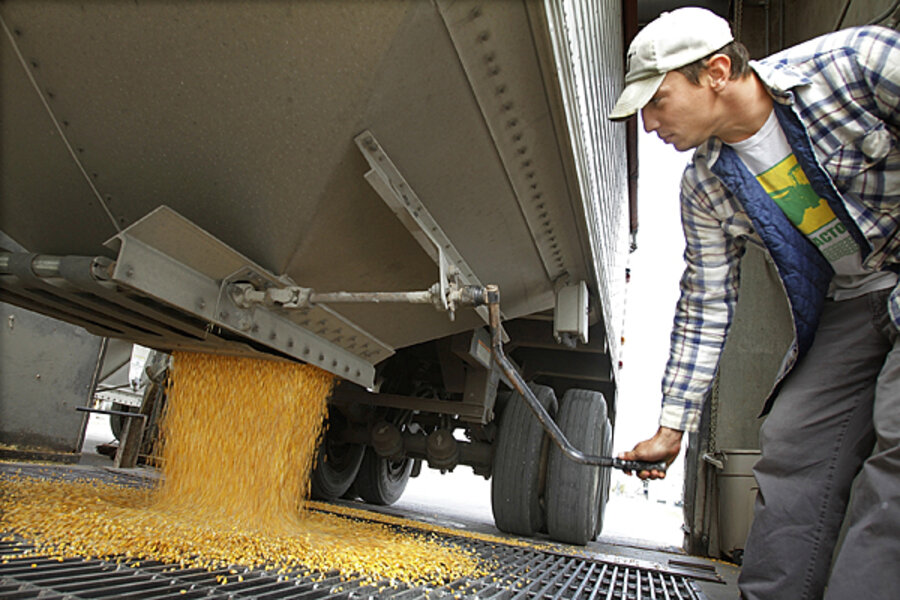A look at the future of biofuels
Loading...
During the recent Total Energy USA Conference in Houston, I had a chance to interview Mr. Jan Koninckx. Mr. Koninckx is the global director of biofuels for DuPont Industrial Biosciences – an arm of DuPont that has a strong focus on biofuels. Also present was Wendy Rosen, DuPont’s PR director.
The interview was focused around DuPont’s efforts in 2nd generation biofuels. DuPont is currently engaged in two major projects to commercialize advanced biofuels.
The first is a 30 million gallon per year corn stover-fed facility in Nevada, Iowa. DuPont has been working on this technology for about 10 years. They focused on corn stover because it is one of the easiest feedstocks to process, and because it is already there as a byproduct of ethanol production. DuPont broke ground on this facility on November 30, 2012 and start-up is planned for mid-2014. The facility has about 100 farmers under contract to provide 360,000 tons per year of corn stover (dry mass basis) for DuPont’s enzymatic process.
The stover will be gathered in a 30 to 40 mile radius around the facility. Mr. Koninckx said that the yields of stover have been increasing over time, and they expect these yield increases to continue. He also said that they can sustainably remove some stover from the fields without lowering the soil quality, and that the lignin-rich byproduct of the process could be used to replace coal.
The capital cost of the first facility was stated to be “less than $7/gallon” of capacity, which puts the total cost in the $200 million range. This is certainly higher than comparable costs for a corn ethanol facility, and given the issues with the blend wall and current overcapacity in the ethanol market, DuPont certainly faces challenges in this effort. More detailed information on this project can be found at DuPont Biofuel Solutions.
The second project is a joint venture with BP called Butamax Advanced Biofuels. This project will also utilize corn stover and a mild caustic pretreatment process to produce iso-butanol (i-BuOH) from genetically modified organisms. The process will utilize both 5 and 6-carbon sugars, and the yield of i-BuOH is expected to be around 75 gallons per ton. DuPont projects that this process will eventually be competitive with oil at $70-$80 per barrel, and that 2 to 4 billion gallons of i-BuOH can be produced in the U.S. from corn stover alone.
I have a background in butanol production (I describe my experience with butanol in Butanol 101), and therefore posed some fairly detailed and technical questions on the process. The organism they are using to make butanol is a yeast that was genetically modified specifically to make i-BuOH, which has an octane advantage over n-BuOH, and is simply a better fuel than n-BuOH according to Mr. Koninckx. Iso-butanol is also the type of butanol that Gevo produces. (Iso-butanol is very similar to normal butanol; it has the same numbers of the same kinds of atoms, but they are arranged differently).
Mr. Koninckx said that the plan is simply to closely mimic the process for corn ethanol, but to make i-BuOH instead of ethanol. The two major differences in the two processes are in the organism used for the fermentation, and in the separation process. My guess is that their separation process involves membranes, but he would not confirm this, stating that it is proprietary.
One of the major challenges in the production of butanol (normal or iso-butanol) is that the toxicity to microbes is high (particularly for n-BuOH) and therefore the concentrations that can be achieved have been historically very low. This means that the product may contain less than 2% butanol (and 98% water), which makes the separation too energy intensive to be economical.
When I asked about the nature of the products and the separation, Mr. Koninckx replied that some acetone and ethanol were also produced, but because they use a mild separation process there aren’t a lot of other inhibitors in the process. They can therefore achieve somewhat higher concentrations. However, the mild pretreatment also means that more potent enzymes must be used.
One item of particular interest to me is the approval process for allowing a new fuel to be blended into the system. Mr. Koninckx stated that they are currently going through the EPA regulatory approval process for 16% butanol, which has the same oxygen content as 10% ethanol. Moving to 24% butanol will require additional approval steps. They were expecting approval to be imminent, and did not expect any significant issues that would interfere with their commercialization plans.
However, he did confirm for me that until approval is granted, there is no route into the fuel supply for their product. This won’t be an issue for DuPont since they are deep into the approval process, but it will be an issue for others attempting to commercialize a new fuel blend.
In conclusion, Mr. Koninckx was extremely confident that DuPont’s processes for both the cellulosic ethanol and butanol processes would ultimately succeed commercially. The beauty of the butanol process is that much higher blends can be sent through the existing fuel infrastructure. This is a problematic issue for ethanol, which has incompatibilities with certain components in the fuel infrastructure. Personally, having worked on butanol production for a number of years, I am a bit partial to it and will be watching DuPont’s efforts closely.
Source: A Look at DuPont Biofuel’s Work on Cellulosic Ethanol and Butanol







